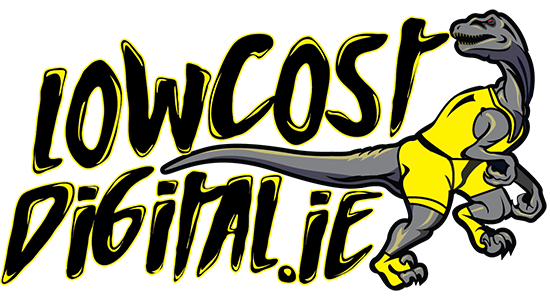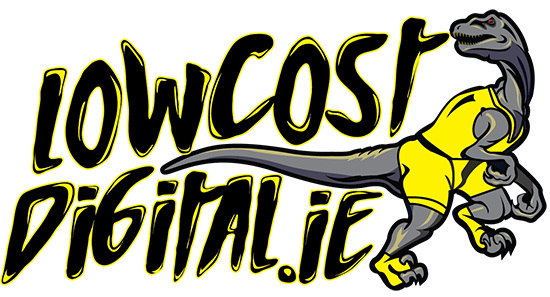Key Highlights
- A web design contract is crucial for businesses and enterprises working with independent and freelance contractors
- A well-structured web design contract can save you from future headaches by providing clarity and preventing misunderstandings
- Key components of an effective web design contract include identifying the parties involved, detailing the scope of work, setting clear expectations through milestones and deadlines, and addressing financial terms and conditions
- Legal protections, such as intellectual property rights and confidentiality agreements, should be included in the contract to protect both parties
- Termination clauses and dispute resolution procedures should be outlined in the contract to address potential issues and provide a resolution mechanism
- Essential tips for crafting a web design contract include consulting with legal professionals and customizing contracts for different projects
Introduction
A web design contract is more than just an agreement between two parties; it is the foundation of a successful partnership. For in-house teams collaborating with independent contractors and freelancers, a web design contract is essential to define the relationship, articulate deliverables, and safeguard both parties’ interests. It provides clarity, minimizes risks, and ensures a smooth project execution.
Web design contracts play a crucial role in web development projects. They establish mutual understanding, provide clarity, and map out project execution. By setting clear expectations and outlining the scope of work, a web design contract helps prevent scope creep and project boundary ambiguities. It also addresses financial terms and conditions, protects intellectual property rights, and establishes termination clauses and dispute resolution procedures.
Crafting an effective web design contract requires careful consideration of various key components. Identifying the parties and their roles, detailing the scope of work, setting clear expectations through milestones and deadlines, addressing financial terms and conditions, and ensuring legal protections are all essential elements of a comprehensive web design contract. Additionally, consulting with legal professionals and customizing contracts for different projects can further enhance the effectiveness of a web design contract. www.lowcostdigital.ie
Understanding the Importance of a Web Design Contract
A web design contract serves as a legal document that outlines the terms and expectations of a web design agreement. It is crucial for businesses and enterprises working with independent contractors and freelance web designers. The contract establishes mutual understanding, provides clarity, and safeguards the interests of both parties. It acts as a single source of truth that guides the project and prevents issues such as misinterpretation of project goals or expectations. A well-structured web design contract is an essential tool for successful web design projects.
The Role of a Contract in Web Design Projects
In web design projects, a contract plays a vital role in defining the relationship between the service provider and the client. It outlines the scope of work, deliverables, payment schedules, and milestones, ensuring clear project expectations and safeguarding the interests of both parties.
By clearly articulating the responsibilities and liabilities of each party, a contract minimizes the risk of miscommunication and helps maintain a professional relationship throughout the project. It provides a roadmap for the project, ensuring that tasks are completed in a timely manner and that the project stays within the agreed-upon scope.
A web design contract acts as a legal document that protects both the service provider and the client. It sets clear boundaries, establishes accountability, and provides a framework for resolving any disputes or issues that may arise during the project. Overall, a well-structured contract is essential for the successful execution of web design projects. www.lowcostdigital.ie
How a Well-Structured Contract Can Save You From Future Headaches
A good web design contract can save you from future headaches by providing clarity, setting expectations, and addressing potential issues before they arise. It acts as a legal safeguard and helps prevent misunderstandings, disputes, and costly legal battles.
A well-structured contract includes detailed project scope, milestones, deadlines, and deliverables, ensuring that both parties are on the same page and have a clear understanding of what is expected. It also outlines revision policies and approval processes, preventing endless revisions and ensuring timely completion of the project.
By including financial terms and conditions, such as pricing models, payment schedules, and handling additional costs, a good contract eliminates ambiguity and avoids surprises. It also protects the parties’ intellectual property rights and ensures confidentiality, mitigating the risk of copyright infringement and data breaches.
Seeking legal advice while drafting a web design contract is highly recommended. A contract attorney can provide valuable insights and ensure that the contract is legally sound and enforceable. Investing time and resources into crafting a good contract can save you from future headaches and contribute to a successful web design project.
Key Components of an Effective Web Design Contract
An effective web design contract consists of several key components that ensure clarity, address expectations, and protect the interests of both parties involved. These components include identifying the parties and their roles, detailing the scope of work, setting clear expectations through milestones, deadlines, and deliverables, and addressing financial terms and conditions.
The contract should clearly state the project scope, outlining the specific tasks and deliverables agreed upon by both parties. It should also include provisions regarding ownership rights, specifying who owns the intellectual property rights to the final website design.
Using a web design contract template can be helpful in ensuring that all essential components are covered and that the contract is comprehensive and legally sound. Customizing the contract to fit the specific project requirements is essential to ensure that all aspects of the project are adequately addressed. www.lowcostdigital.ie
Identifying the Parties and Their Roles
One of the essential components of a web design contract is clearly identifying the parties involved and their roles. This section of the contract establishes the legal relationship between the service provider, typically the web designer or web design agency, and the client.
The contract should clearly state the names of the parties, along with their full contact information, including mailing addresses, phone numbers, and email addresses. This information is crucial for setting a clear foundation for all subsequent interactions and establishing legal accountability and communication throughout the project.
By clearly identifying the parties and their roles, the contract ensures that both the service provider and the client understand their responsibilities and obligations. It sets the stage for a successful partnership and helps avoid any potential misunderstandings or disputes that may arise during the project.
Detailed Scope of Work: From Concept to Launch
The detailed scope of work is a crucial component of a web design contract as it outlines the specific tasks and deliverables that will be provided by the service provider. This section of the contract ensures that both parties are in agreement regarding the work to be done and the expected outcome.
The scope of work should include a comprehensive description of the website design project, from the initial concept to the final launch. It should cover aspects such as:
- Website design and development: Specify the design elements, functionality, and features that will be included in the website.
- Content creation: Outline the content requirements, including text, images, videos, and any other media that will be incorporated into the website.
- Testing and revisions: Define the process for testing the website and making any necessary revisions or modifications.
- Completion and delivery: Set a timeline for the completion and delivery of the final website.
By clearly defining the scope of work, both the service provider and the client have a clear understanding of the project’s objectives and can ensure that the final website meets their expectations. www.lowcostdigital.ie
Setting Clear Expectations Through Your Contract
Setting clear expectations is crucial for the successful execution of a web design project. A well-structured web design contract includes provisions for milestones, deadlines, and deliverables to ensure that both parties are on the same page and have a clear understanding of project timelines and expectations.
Milestones serve as checkpoints throughout the project, allowing both parties to assess progress and make any necessary adjustments. Deadlines provide a sense of urgency and ensure that tasks are completed in a timely manner. Deliverables are the tangible outcomes of the project, such as wireframes, design mockups, or the final website.
By including these provisions in the contract, both the service provider and the client can set clear expectations, monitor progress, and ensure that the project stays on track. This helps avoid delays, misunderstandings, and potential disputes, ultimately leading to a successful web design project.
Milestones, Deadlines, and Deliverables
Milestones, deadlines, and deliverables are critical aspects of a web design contract that help set clear expectations and ensure a smooth project execution. By defining these components, both the service provider and the client can monitor progress, stay on track, and achieve desired outcomes.
Milestones act as checkpoints or key stages throughout the project. They allow both parties to assess progress, make any necessary adjustments, and ensure that the project is proceeding as planned. Deadlines provide a sense of urgency and ensure that tasks are completed within a specified timeframe.
Deliverables are the tangible outcomes or results of the project. They can include wireframes, design mockups, coded templates, or the final website itself. By clearly defining the deliverables and their corresponding deadlines, both parties can ensure that the project is completed in a timely manner and meets the agreed-upon requirements.
Including milestones, deadlines, and deliverables in the web design contract helps establish accountability, prevent scope creep, and ensure that the project progresses smoothly from start to finish. www.lowcostdigital.ie
Revision Policies and Approval Processes
A well-structured web design contract includes clear revision policies and approval processes to manage client feedback, revisions, and ensure timely project completion. This section of the contract sets expectations for both parties, minimizes potential conflicts, and facilitates effective communication throughout the project.
The contract should specify the number of revision rounds included in the project costs. It should also clarify any additional charges that may apply for additional revisions beyond the agreed-upon rounds. This helps manage the scope of work and prevents the project from becoming mired in endless revisions.
Additionally, the contract should outline the approval process, including the timeline for the client to review and provide feedback on deliverables. It should also address how delays in feedback may impact the project timeline and delivery date.
By including clear revision policies and approval processes in the contract, both parties can ensure that client feedback is addressed, revisions are managed effectively, and the project progresses smoothly towards completion.
Financial Terms and Conditions
Pricing models in a web design contract should align with the project scope. Detailed payment schedules ensure clarity on costs, avoiding disputes. Handling additional expenses like revisions or scope creep is vital for project success. Transparent financial terms protect both client and service provider. Communicating how extra costs will be managed keeps expectations clear throughout the project. Effective financial terms foster trust and professionalism in web design agreements.
Pricing Models and Payment Schedules
Pricing models and payment schedules in a web design contract are pivotal. Selecting the right model aligns incentives between parties. Common models include fixed-price, hourly, or milestone-based. Payment schedules need to balance the needs of the web designer and client. They often revolve around project milestones or specific dates, ensuring cash flow for both parties. By clearly outlining these aspects, misunderstandings are minimized, fostering a smoother project flow. This transparency builds trust and sets expectations clearly.
Handling Additional Costs and Expenses
Include clauses in your web design contract that clearly outline how additional costs and expenses will be managed. Specify whether approval is required for any extra expenditures beyond the initial agreement. Address potential scenarios such as scope creep and the need for additional services beyond the defined project scope. By establishing clear guidelines on handling unforeseen costs, you can avoid disputes and ensure transparency in your financial dealings. Be thorough in detailing this aspect to safeguard both parties’ interests. www.lowcostdigital.ie
Legal Protections for Both Parties
When crafting a web design contract, ensuring legal protections for both parties is crucial. Addressing intellectual property rights and usage terms explicitly prevents potential copyright infringement issues. Including confidentiality agreements and data protection clauses safeguards sensitive information. Consulting with legal professionals can further fortify these protections. By clearly defining ownership rights and responsibilities, you establish a solid legal framework for your web design project. Implementing these safeguards enhances trust and minimizes risks for all involved.
Intellectual Property Rights and Usage
When engaging in web design projects, understanding intellectual property rights and usage is crucial. Clearly outlining ownership rights and usage permissions in the web design contract is imperative to avoid copyright infringement issues. Include clauses related to intellectual property to protect both parties. Specify how ownership of created assets will be transferred and used post-project completion. Consult legal professionals to ensure the contract addresses these aspects comprehensively, safeguarding the interests of all involved parties. Understanding these rights is essential for a smooth project execution. www.lowcostdigital.ie
Confidentiality Agreements and Data Protection
Confidentiality agreements and data protection are crucial aspects of a web design contract. These clauses safeguard sensitive information shared during the project, preventing unauthorized disclosure. Data protection measures ensure client data security and compliance with privacy regulations. By including clear provisions on confidentiality and data protection, both parties are legally bound to maintain secrecy and uphold privacy standards throughout the project lifecycle. Properly drafted clauses mitigate risks of data breaches and unauthorized use of confidential information.
Termination Clauses and Dispute Resolution
Navigating termination clauses and dispute resolution in a web design contract is crucial for both parties. Clearly outline conditions for contract termination to avoid misunderstandings. Include procedures for mediation and arbitration to resolve disputes efficiently. Establishing these clauses upfront can protect the rights and obligations of all involved, ensuring a smoother project experience overall. Terminating a contract or addressing disputes can be complex, so having clear protocols in place is essential for the successful resolution of any conflicts.
Conditions for Contract Termination
While not the most pleasant aspect, understanding the conditions for contract termination is crucial. Some common conditions include breaches of contract, failure to meet deadlines, or mutual agreement. It’s essential to clearly outline these conditions in your web design contract to protect both parties. By specifying termination circumstances, you mitigate risks and clarify what actions warrant contract dissolution. This ensures a smoother exit strategy if the need arises, establishing a framework for a professional and respectful conclusion to the agreement. www.lowcostdigital.ie
Mediation and Arbitration Procedures
In the event of disputes, mediation and arbitration procedures outlined in a web design contract serve as crucial mechanisms for resolution. Mediation involves a neutral third party facilitating communication between the disputing parties to reach a voluntary agreement. On the other hand, arbitration entails a binding decision made by an arbitrator after considering all evidence presented. These procedures provide a structured approach to settling conflicts efficiently, avoiding costly litigation and maintaining the professional relationships essential for successful web design projects.
Essential Tips for Crafting Your Web Design Contract
Look to consult with legal professionals experienced in web design contracts. Customize each agreement according to the project’s unique needs. Ensure your contracts are clear and understandable to all parties involved. Seek to use plain English where possible to avoid confusion. When refining your contract, pay attention to details like rounds of revisions and scope creep. Additionally, clarify termination conditions and dispute resolution methods to protect both parties’ interests.
Consulting with Legal Professionals
For consulting with legal professionals regarding your web design contract, seek specialized advice on intellectual property rights, contract clauses, and termination conditions. Legal teams can ensure your document is legally sound and protects your interests. Address any ambiguity in plain English, especially in complex sections like ownership rights or indemnification clauses. Collaborating with a contract attorney familiar with web design agreements can prevent future disputes and ensure a robust legal framework for your projects.
Customizing Contracts for Different Projects
Tailoring contracts to suit the unique requirements of varied projects is crucial in the web design industry. Each project may have specific needs that demand a customized approach to the contract terms. By adapting clauses related to scope, timelines, deliverables, and payment structures, you can ensure that the contract reflects the nuances of each project accurately. Customizing contracts not only enhances clarity but also helps in mitigating potential conflicts by addressing project-specific considerations efficiently.
Conclusion
In conclusion, a well-structured web design contract is vital for ensuring a smooth project journey with clear expectations, protecting intellectual property rights, and outlining financial terms. By including key components like detailed scope of work, milestones, and legal protections, you can safeguard both parties and prevent future disputes. Crafting a contract tailored to your specific project needs, consulting legal professionals, and addressing potential issues like scope creep are essential steps in creating a successful web design agreement. Remember, a solid contract sets the foundation for a productive and successful collaboration between all parties involved.
Frequently Asked Questions
What is the minimum information that should be included in a web design contract?
Key components like project scope, roles, timelines, payment terms, and legal protections are crucial. Clearly outline deliverables, revisions, pricing models, intellectual property rights, confidentiality agreements, termination clauses, and dispute resolution methods in your web design contract.
How do I handle scope creep in web design projects?
Scope creep in web design projects can be managed by setting clear project scopes, defining change request processes, and maintaining open communication with clients. Regular project monitoring and documentation also help prevent scope creep.












